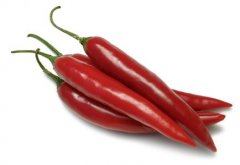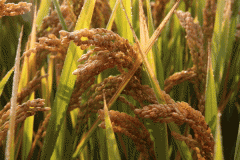动物育种选择强度和遗传进展
养殖知识网 发布时间:2017-05-04
选择强度和遗传进展 Selection Intensity and Genetic Improvement Dinesh Thekkoot博士 Dinesh Thekkoot, PhD 阿尔伯塔大学和加裕公司。 University of Alberta and Genesus Inc. 动物育种目的是利用个体之间的遗传差异改良种群。遗传进展是通过选留优秀的动物作为亲本,从而决定下一代的遗传值。这个过程的基本机制是增加群体中有利基因的频率,并防止劣势基因动物通过下一代传递不利基因。 育种体系的遗传进展取决于四个关键因素,计算公式如下: Animal breeding aims to improve livestock populations by utilizing the genetic differences among individuals. Genetic improvement is achieved by selecting superior animals as parents, and this determines the genetic value of the next generation. The basic mechanism underlying this process is to increase the frequency of the favorable form of genes in the population, and to prevent genetically inferior animals from passing their unfavorable forms to next generations. Genetic improvement per year from a breeding program depends on four key factors and is calculated as follows: ?G= (irs_g)/L (1) ?G是遗传进展,i是选择强度,r是选择准确性,s_g是群体育种值的标准差,L是世代间隔。 前面文章已经详细描述了选择准确性的重要性,文章可以通过这个链接查阅。在本篇报告中,我们将讨论另外一个因素-选择强度。 在动物育种中,通常采用截断的方式选择动物,即只有当个体的指数高于一定的截止值时(截断点),才能被选留作为亲本;截断选择的结果是选留群体的平均指数和总群体的平均值之差,称为选择差(S)。选择差的定义是超过总群体平均值的优势选留群体。 Where ?G is the genetic improvement per year, i is the intensity of selection, r is the accuracy of selection, s_gis the genetic standard deviation of the trait under selection and L is the generation interval expressed in years. The importance of accuracy of selection was described in detail in a previous article, which can be read here. In this report, we will discuss another factor - The intensity of selection It is common in animal breeding to select animals by means of truncation, i.e. individuals are selected as parents only if their index values are higher than a certain cutoff value; the truncation point. Truncation selection results in a difference between the mean indexes of selected parents and the overall population mean, which is called Selection Differential (S). Selection differential is defined as the superiority of the selected parents over the population mean. 选择差= I 々_选留群体-I 々_总群体 S= I 々_selected-I 々_population (2) I 々_selected 是指选留群体平均指数,I 々_population是指总群体平均指数。用标准差除以选择差,可以将选择差标准化。标准化的选择差称为选择强度,用i表示。 Where I 々_selected is the mean index of the selected parents and I 々_population the mean index of the population. The selection differential can be standardized by dividing it with standard deviation of the index (s_I ). The standardized selection differential is called selection intensity, and is expressed as i. i= (I 々_selected-I 々_population)/s_I (3) 根据以上的公式,我们可以看到,选择差越高,遗传进展(?G)将会越高。 From the above equations, we can see that higher the selection differential, higher will be the genetic improvement (?G). 假设一个猪群的平均指数是100,标准差是25。当从这个群体中选择时,我们通常从高于一个特定值的被选群体中去选择,比如130。在这种情况下,130被称为截断点。图1代表了整个群体的分布,选留群体为阴影区域所示。选留群体的平均指数是142.2,这种情况下选择差等于42.2(142.2-100)。 Consider a population of pigs with a mean index value of 100 and standard deviation of 25 index points. While selecting from this population, we typically select from within the chosen group of pigs that fall above a certain index value, say 130. In this case 130 is called the truncation point. Figure 1, represents the distribution of this population, where the selected parents are indicated by the shaded region. The average index of the selected parents will be 142.2 and the selection differential in this scenario will be 42.2 (142.2 – 100). 图1 Figure 1: 理论上一个更大的选择差将会得到更高的遗传进展。因此为了提高选择差,我们需要把截断点向分布图的更右侧移动。这样会得到了更高的选择差,但是降低了选留的亲本动物群体数量。图2证明,把截断点从图1中的130向右移到140的情况下,选留群体的平均值增加到150.6,但是被选留的动物比例下降了(位于阴影区域部分)。 In theory a larger selection differential will result in higher genetic improvement. Hence to increase selection differential, we need to move the truncation point further to the right of the distribution. This results in a higher selection differential, but a lower number of animals being selected as parents. Figure 2 demonstrates the scenario of moving the truncation point to 140 from 130 (Figure 1). Here the mean of the selected parents will increase to 150.6, but the proportion of animals selected es down (indicated by the shaded region). 图2 Figure 2 从公式1中我们可以看出,选择强度i越高,遗传进展越大。选择强度i取决于选留群体的比例。例如,当选留的比例是100,也就是如果我们选择了全部群体,选择差和选择强度都为0,则没有任何遗传进展。相反,如果我们选留了非常小的比例,假设是0.01%(从10,000个个体中选择1个),选择强度则是3.9,遗传进展非常大。 总的来说,为了遗传进展最大化,育种体系需要保证尽可能低的选留比例。但是对于较小数量的核心群体来说,更高的选择强度可能导致更高的近亲交配,从而降低遗传方差或者标准差。从公式1中我们可以看出,降低遗传标准差将会降低遗传进展。更大的群体,合理地管理核心群体数量将会增加遗传变异。在对遗传进展没有任何负面效应的情况下提高选择强度,最好的方式是增加核心群体数量。加裕公司管理着世界上最大的纯种注册核心群体,这样庞大的群体数量有助于在没有任何负面效应的情况下,保持我们育种体系中很高的选择强度,确保最高的遗传进展和加裕客户的最大盈利。 From equation 1 we can see that, higher the value of i, the bigger will be the genetic improvement per year. The value of i depends on the proportion of animals selected as parents. For example, when the proportion selected is 100, i.e. if we select the whole population, both the selection differential and the selection intensity will be zero, and there won’t be any genetic improvement. Conversely, if we select a very small proportion, say 0.01%, (selecting 1 out of every 10,000 animals), the selection intensity will be 3.9, and the genetic improvement will be very large. In general, to maximize the genetic improvement, breeding organizations need to keep the selection proportion as low as possible. But for smaller nucleus populations, higher selection intensity can result in higher inbreeding and thereby reduced genetic variance or standard deviation. From equation 1 we can see that reduced genetic standard deviation will reduce genetic improvement. Larger, well managed nucleus populations will have increased genetic variation. The best way to increase the selection intensity without any negative effects on genetic improvement is by increasing the nucleus population size. Genesus manages the world’s largest registered pure bred nucleus herd, and this large population helps to maintain very high selection intensity in our breeding program without any adverse effects, assuring the highest genetic response and maximum profitability to Genesus customers.
推荐图文
- 广西农科院选育辣椒新品
项目负责人何铁光博士告诉南国早报记者,这样的环境对,——有利的...
- 金山将首次推广种植超级
#本报讯 今年示范种植丰产方安排表告诉记者,据曹东杰经理介绍,负...
- 杂交稻制种基地落户公安
农业部近日认定的首批国家级杂交水稻和杂交玉米种子生产基地名单...
- 广州市番禺区美丽乡村试
大力推进新农村建设,促进新型城市化发展。,统筹打造,完善基础设...
相关内容
- http://cs1j.com/传奇世界sf
- http://www.btfcs.com/传世私服
- http://www.qpcsw.net/传世sf
- 妊娠期猪妈妈不要愁,你们的福音来
- 算算养牛账 说说增收招
- 兽药的选择和使用不合理之处
- 特驱集团董事长王德根:没有人能替
- 中央发政策红包!明年这7大群体受
- 企业各自为战场间种猪关联度不高
- 酒泉瓜州“小群体 大规模”打造养
- 今夏小麦收购:顺“势”而为将是不
- 科学家发现遗传数据错误 家猪驯化
- 兽药残留检测技术挽回千亿元损失